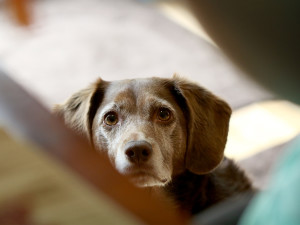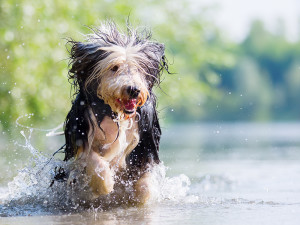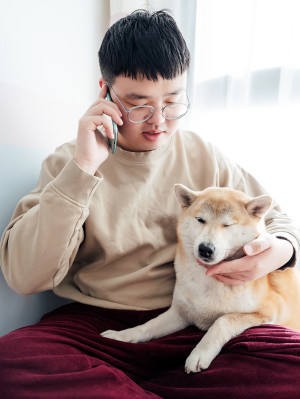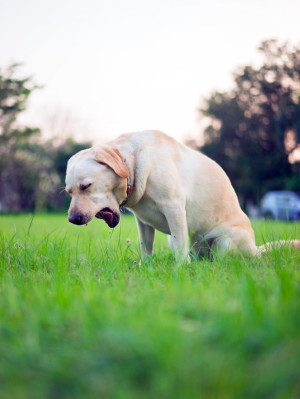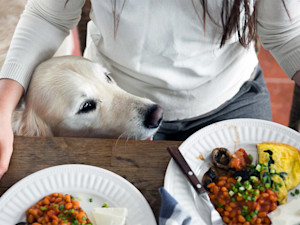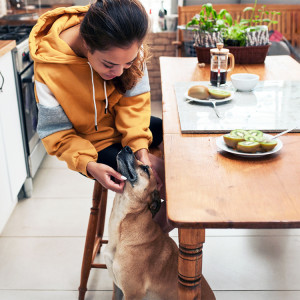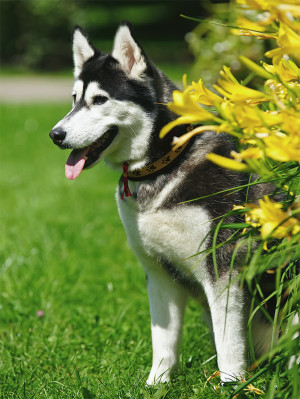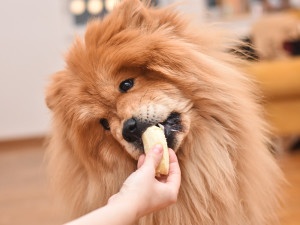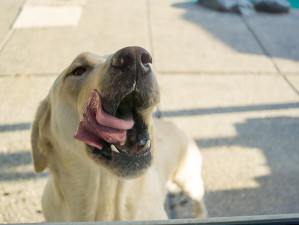Can Dogs Eat Onions?
Add them to the list of no-nos in the kitchen...
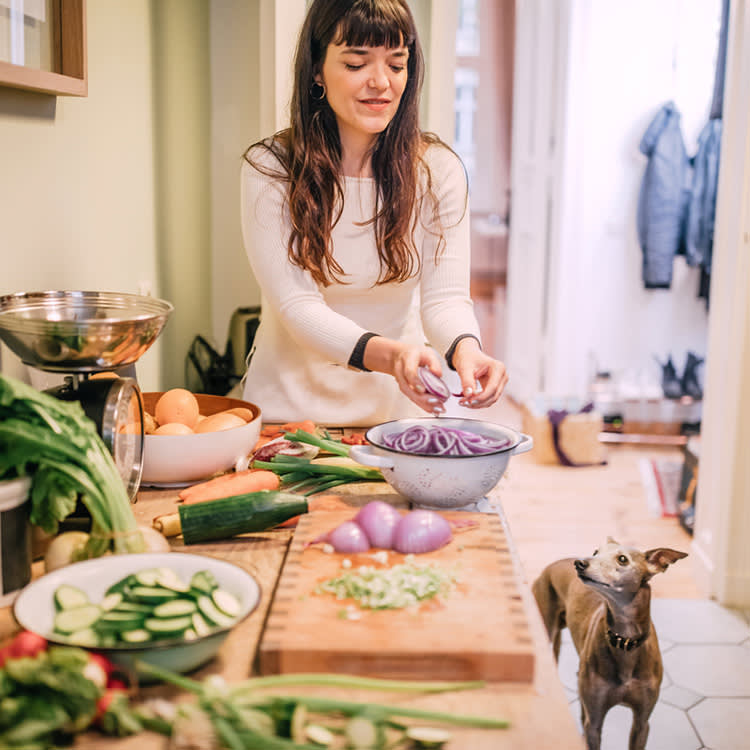
Share Article
French onion soup, onion rings, creamed pearl onions, even the bloomin’ onion… the ways to enjoy onions are endless, unless you’re a dog, in which case, there are zero ways to enjoy onions. Dogs cannot eat onions, and onions are actually considered toxic to dogs. Depending on how much onion a dog eats, they can experience a range of symptoms from mild to severe.
While many foods are safe to share with your dog, onions are one of those that should never be shared. It is important to keep this in mind whenever you share any food with your pup; what may be harmless to us can be dangerous for them. Be sure to double-check the ingredients before sharing your food with them because prepared foods and condiments often contain onions, and we may not realise it. Read on to learn all about the risks of onions for dogs.
Nutrition facts about onions for dogs
Onions are the bulb of a plant called Allium cepa. The Allium genus also includes other edible plants, such as garlic, leeks, shallots, chives, scallions and ramps. Many of these plants are used for their powerful flavours and are common ingredients in dishes cooked around the world.
Onions also provide health benefits, such as fibre, vitamin C and antioxidant properties. Unfortunately, your dog cannot benefit from these healthy nutrients in onions, but the good news is that many safe, edible plants also contain these same nutrients.
Are onions good for dogs?
Onions are not good for dogs, and in fact are considered toxic to them. In onions, the main toxic compound is called N-propyl disulfide. These compounds can cause digestive upset including vomiting, diarrhoea and loss of appetite at lower doses.
At higher doses, they can cause more serious damage to red blood cells called haemolytic anaemia. This can cause your pup to have pale gums, difficulty breathing, and to feel very weak and lethargic. In some cases, it can take up to five days for dogs to show obvious signs of onion toxicity, so it’s important to see your vet as soon as you realise your dog ate onions or another allium plant.
Can dogs eat cooked onions or onion powder?
No, dogs cannot eat cooked onions or onion powder. Cooked onions, dried onions and even onion powders are all toxic to dogs. Actually, some toxins are released in greater amounts through the chopping and cooking process, so cooked onions can be more dangerous in some cases. Additionally, dried onions and onion powders also tend to have more concentrated amounts of these toxins, so not only are they toxic, but dogs only need to consume small amounts of these products to experience the same effects.
What are the signs of onion toxicity?
If you see your dog consume onions or realise they ate something with onions as a main ingredient, be sure to contact your vet and a pet-poison hotline. They can help you determine if the amount your dog ate is likely to cause serious illness based on the type of onion product consumed, the amount they ate and their weight.
If your dog consumed enough to be a serious problem, it is important to get to a vet as soon as possible to start treatments that may help to protect them and to start monitoring for more serious problems like anaemia. Sometimes, dogs don’t show signs of the toxicity for up to five days, so it does not mean they are in the clear if they are acting fine at first. Some common signs of onion toxicity include:
Gastrointestinal upset: vomiting, loss of appetite and diarrhoea can all be effects of onion toxicity as compounds in onions and other allium plants irritate the lining of the digestive tract.
Lethargy and weakness: dogs with anaemia, or low red blood cell counts, will often be lethargic and weak because they don’t have enough red blood cells to transport oxygen throughout their body.
Rapid breathing and difficulty breathing: as the body senses a lack of oxygen in the tissues, it tries to compensate by breathing faster and harder. But because there are not enough red blood cells to transport the oxygen, this does not improve their signs.
Yellow tint to skin and eyes: this yellow tint is known as icterus and is the result of haemolysis, or the breakdown of red blood cells. When red blood cells are destroyed, they release bilirubin, a pigment that can cause that yellowish tint. It is most obvious on the whites of the eyes and areas with lighter skin such as ear flaps or on the belly. It will also cause the serum portion of the blood to look yellow.
Pale gums: dogs with anaemia will have pale pink or white gums, instead of their normal bright bubble-gum pink tint. This is because they have less red blood cells in circulation, resulting in pale tissues.
Dark-brown urine: this may be due to haemolysis, which causes that yellow colour, as well as a secondary process that results in the formation of methaemoglobin in the blood. This can cause the blood and urine to have a darker brown pigmentation as well.
The bottom line: can dogs eat human food?
While dogs can eat many foods intended for people, onions are a good example of why it is always important to double-check ingredients before sharing foods with your dog. Onions and garlic are so common in our food that we may not think about how often they may be used in cooking various dishes. And that is not the only ingredient to be aware of when sharing foods with your pup. There are quite a few foods that can be toxic to dogs, as well as others that can put them at risk for digestive upset or even pancreatitis.
Often, the safest option is to share foods with your dog that are plain and don’t have too many ingredients so you can keep it simple. Luckily, dogs can enjoy many fruits and vegetables and reap some valuable health benefits in the process. Just be sure to keep all treats and table scraps to a minimum to ensure they get the bulk of their calories from a complete and balanced dog food that will meet their nutritional needs.
Foods that are safe for dogs
Apples are a good example of a safe and healthy food to share with your pup.
Celery is also a good choice.
Eggs can be a high-protein option for your pup.
Other foods that are dangerous
Grapes and raisins are also toxic to dogs.
Chocolate, coffee and these other toxic foods should always be avoided, too.
While some cheeses are OK in small amounts, here’s why you shouldn’t share too much with your dog.
Frequently asked questions
How much onion can a dog eat?
Dogs should not eat any amount of onion; it’s toxic to them. The toxic amount depends on the type of onion, such as cooked, dried, powdered and the size of the dog.
Is it OK to give dogs onions?
No, it is not OK to give dogs onions. They are toxic to dogs, as are all plants in the Allium genus, including garlic, chives, leeks, scallions, shallots and ramps.
Can dogs eat onion powder?
No, onion powder is also toxic to dogs and often, it has more concentrated amounts of the toxic compounds, so dogs can get sick from eating a small amount.
This information is not meant to be a substitute for veterinary care. Always follow the instructions provided by your vet.
References:

Dr. Amy Fox, DVM
Amy Fox, DVM is a small animal veterinarian in New York City. A lifelong animal lover, Dr. Fox studied biology in college and then worked as a veterinary nurse before pursuing veterinary school at Cornell University. She has worked in many different settings including shelter medicine, emergency medicine, general practice, and animal cruelty and forensics. She is especially interested in nutrition, preventative medicine and care for senior pets. Dr. Fox also enjoys writing about veterinary medicine and teaching. In her free time she loves to cook, garden, and go for long runs.
Related articles
![Girl with plate of kiwi sitting at table stroking dog]()
Can My Dog Eat Kiwi?
Your dog can snack on this fibre-fuelled fruit but don't go all out...
Are Lilies Toxic to My Dog?
This is one of those ‘no, but also yes’ answers...
![A person giving a banana to a dog.]()
10 Fruits and Vegetables That Your Dog Can Feast On
Indulge your dog (safely) with these delicious and healthy snacks
![Labrador sitting in the grass coughing]()
What to Do If Your Dog Eats Something They Shouldn’t
Whether it’s socks, stones or an affair partner’s underpants (true story), a vet weighs in on how what to do when your dog swallows something that wasn’t on the menu
![Labrador retriever licking their lips]()
Why Do Dogs Eat Poo?
What to do when your dog has questionable tastes
![A woman smiling at her dog while carrying a bowl of food.]()
Is Yoghurt Good For Your Dog?
It’s safe and healthy, and most dogs love it

